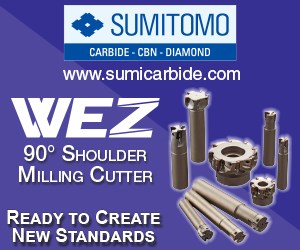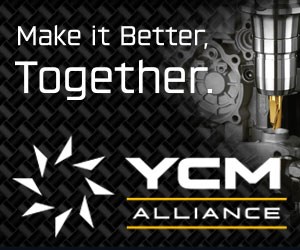Ideas For Simplifying Your Operation
I have been fortunate enough to work with some interesting companies that have done some clever things to simplify their processes and make things easier for everyone. This month, I want to share some of those ideas that I have run across.
Share





I have been fortunate enough to work with some interesting companies that have done some clever things to simplify their processes and make things easier for everyone. This month, I want to share some of those ideas that I have run across. Perhaps some of them will find a place in your shop.
Develop a well-organized setup cart. Setup carts are not a new thing, but I’ve seen many that either do not include enough items or are burdened with too many. In some cases, employees waste too much time trying to locate things on poorly organized setup carts. The best carts I have seen use some type of shadow board (usually a peg board with the outlines of tools clearly visible on it). Shadow boards make organizing tools, components and supplies simple because they readily show where everything belongs, and it is clear when something is missing. The time spent developing a well-organized setup cart will be offset by the time saved looking for things.
When determining order replenishment quantities, keep the process simple. Filling a tote, bucket, box or any type of empty container is one of the simplest means of replenishing needed inventory or supplies. Directing someone to fill a specific size container simplifies the replenishment process by providing a visual indicator of how much to produce. In many cases, an empty container can eliminate the need for paperwork, especially if the part number or item description, along with the user's name, is clearly marked on the container.
Use a photo to describe a desired condition. Whether the desired condition is a particular machine setup, part finish or proper use of a tool, a digital photo can assist in replicating this condition in the future. Photos are also a powerful means of illustrating safe operating conditions, organized work areas and properly arranged storage cabinets, shelves, racks and drawers.
Use a visible flag to indicate the next job to run. A flag on a post, or other visual sign, is a simple means of identifying the job that should run next. Typically, containers of parts are brought to a workcenter at different times, making it difficult to tell which job has the highest priority. When jobs are lined up in first-in/first-out order, work priority is obvious. However, priorities can change, and it is much easier to reposition a flag sitting next to a job than it is to reposition that job (and all the other jobs ahead of it).
Provide a specific identification to tools assigned to a particular machine or workcenter. Assign a color, or multiple colors, to tools that are dedicated to a certain work area. Visual aids, such as color, are an excellent way to simplify organizational maintenance. Painting a color on the tool or using heat shrink tape or tubing can make this identification as permanent as necessary. A specific visual identifier will help to ensure that tools stay in the right place.
Use inserts in drawers to maintain organization. Whether these inserts are made of wood, foam, plastic or even cardboard, they will serve to keep drawers organized by providing designated locations for items. Rigid foam is useful as portions of it can be cut out to match the shape of the items being stored. For example, the shape of a wrench can be cut into a piece of foam to allow for containment of the wrench. Likewise, arbors, hole saws, pins and other round objects can be fit into holes that are cut out of wood or plastic. You probably even have some of these materials lying around that you can put to good use as drawer inserts, instead of throwing them in the dumpster.
Add wheels to anything you can. Wheels provide flexibility by making things easy to move. I have seen wheels (well, really heavy-duty casters) on large machines, such as stamping presses, that allow these machines to be moved to and from workcenters as needed. Likewise, wheels can be added to skids, pallets and other material handling devices to accommodate movement without the need for a crane, hand truck or fork truck.
Reduce the amount of paper in use. How many copies of specification sheets, work orders, purchase requisitions, invoices, and other printed documents do we really need? Every paper copy that is currently in use should be challenged, and users should be forced to justify its continued use. When it comes to paperwork, less is more beneficial.
These are just a few ideas for simplifying operations. I’m sure you have developed a few simplification ideas in your own shop or area. If you have, then let me know what they are. Perhaps I can share your ideas in a future column.
Read Next
Setting Up the Building Blocks for a Digital Factory
Woodward Inc. spent over a year developing an API to connect machines to its digital factory. Caron Engineering’s MiConnect has cut most of this process while also granting the shop greater access to machine information.
Read MoreBuilding Out a Foundation for Student Machinists
Autodesk and Haas have teamed up to produce an introductory course for students that covers the basics of CAD, CAM and CNC while providing them with a portfolio part.
Read MoreRegistration Now Open for the Precision Machining Technology Show (PMTS) 2025
The precision machining industry’s premier event returns to Cleveland, OH, April 1-3.
Read More













.png;maxWidth=300;quality=90)













